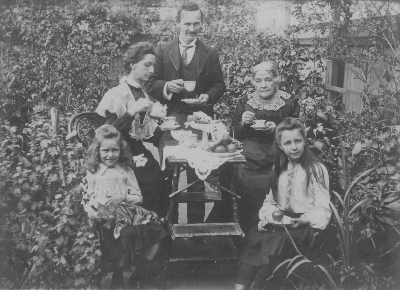Quilt No.203WO - Win Oliver
1090 x 1040mm
Made by Elizabeth Curnow (born Paynter) between 1855-1900, at Yarra St, Geelong (VIC). Owned by her daughter Ada Cox, then in succession Elsie Burrage (Elizabeth's grand-daughter), Winifred Burrage (Elizabeth's great grand-daughter) and Winifred Oliver (Elizabeth's great great grand-daughter), the current owner.
"Elizabeth Curnow was born in 1827 and travelled to Australia in 1852, leaving St Ives, in Cornwall, England. She had been married at 18 to William Edward Curnow. When they left England they had 2 little girls, aged 6 and 4.
On the 5 month voyage she taught William to read and write, so that on arrival in Australia he was able to sign his name and state his trade and religion etc. Also on the long trip, Elizabeth completed a tapestry which remains in the family today.
When the ship arrived near Geelong on Christmas Eve, William went ashore. Upon returning, he commented 'I think we're in for some excitement, Ma.' - there had been shooting at the hotel he had visited.
William Curnow set up as a shipsmith near the docks in Geelong, moving to live in Yarra Street, where he and Elizabeth lived for the rest of their lives. Elizabeth had 10 children, with only 6 surviving to grow up - 2 boys and 4 girls. One grandson, Percy Curnow, was an original Anzac, who lived to return.
Elizabeth Curnow practised crafts from an early age. When a little girl, as a compulsory duty, she had to spend a certain amount of time each day knitting. All through her life she continued her craft work until she died in 1916, leaving tapestry and fine lace work as well as quilting, to her descendants."
[Win Oliver]




Related Quilts:
2033 x 1525mm
1220 x 763mm
2743 x 2439mm
No quilting.
2312 x 1905mm
2000 x 2000mm
1829 x 1575mm








